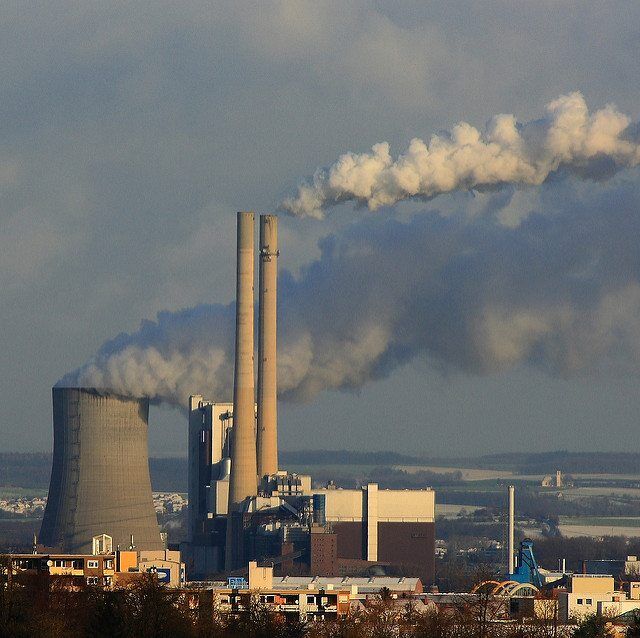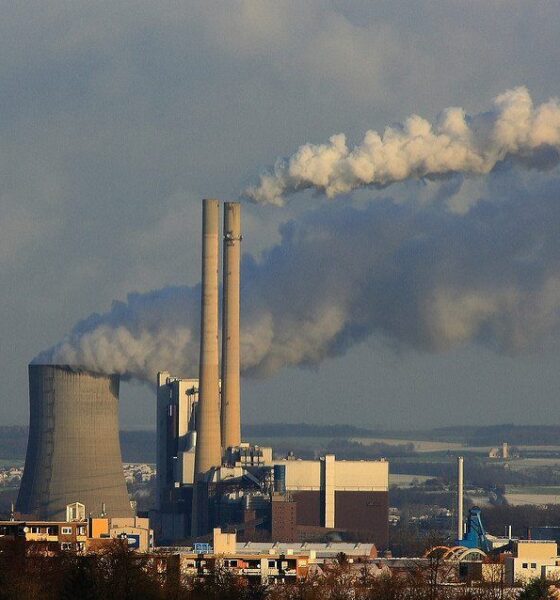

Energy
Rising Impact Of Climate Change Causing $100bn ‘Protection Gap’, Warn Insurance Leaders
The sector must aid the transformation to a zero-carbon, climate-resilient economy
A global network of 29 insurance industry organisations has warned of the urgent need to address the growing $100 billion annual climate risk “protection gap” in two new reports.
Since the 1950s, the frequency of weather-related catastrophes, like windstorms and floods, has increased six-fold. As climate-related risks occur more often and predictably, previously insurable assets are becoming uninsurable, or those already underinsured further compromised.
The economic impact of these natural catastrophes is growing quickly, with total losses increasing five-fold since the 1980s to around $170bn today. Over the same period, the average annual protection gap has widened quickly from $23bn to $100bn today, according to analysis by ClimateWise member, Swiss Re.
“The insurance industry’s role as society’s risk manager is under threat,” said Maurice Tulloch, Chairman of Global General Insurance at Aviva and Chair of ClimateWise, the network convened by the University of Cambridge Institute for Sustainability Leadership, which authored the reports.
“Our sector will struggle to reduce this protection gap if our response is limited to avoiding, rather than managing, society’s exposure to climate risk. As a risk carrier and risk manager, the insurance industry has significant, and as yet untapped, potential to lead others, in reducing this gap.”
ClimateWise’s “Investing for Resilience” report highlights ways that insurers can start to align their asset management, underwriting and risk management activities to support greater investments in resilience across financial markets. Recommendations include support for green bonds, resilience impact bonds and investments in resilience-enhancing infrastructure.
“The insurance industry will inevitably be impacted by the physical, transition and liability risks that climate change presents,” said John Scott, ClimateWise’s “Investing for Resilience” Chair and Chief Risk Officer, Zurich Global Corporate, Zurich Insurance Group. “Finding viable ways to help society adapt and become more resilient to the inevitable changes related to ongoing climate change is vital.”
The report also calls for the introduction of a resilience rating system to help asset managers and policymakers integrate resilience as a consideration into their investment portfolios.
While traditional responses to rising levels of risk – to re-price, withdraw or transfer exposure to others – will always remain a central feature of the industry’s role as society’s risk manager, ClimateWise believes that closer alignment between the underwriting and asset management sides of the industry must play a greater role in the response to climate change.
“Industry leaders now have the opportunity to step up to the challenge outlined by the Paris Climate Agreement,” Tom Herbstein, Programme Manager of ClimateWise added. “In particular, the industry must help shift capital flows into climate-resilient assets and resilience-enhancing investments rather than simply struggling to maintain its current underwriting exposure.”
Since 2009, ClimateWise members have been benchmarking their response to the protection gap in line with the six ClimateWise Principles. Once again, this year’s submissions are summarised in this year’s “ClimateWise Principles Independent Review 2016” reviewed by PwC.
“Climate change presents many risks and opportunities for insurers,” said Jon Williams, Partner, Sustainability & Climate Change at PwC and member of the FSB Task Force on Climate-related Financial Disclosures. “This year’s review highlights clearly that insurers can and need to do more, specifically within their own investment activities, in response to climate-related perils.“
ClimateWise also supports industry innovation via its Societal Resilience Programme. The Programme commissions research into how the insurance industry can better leverage its risk carrying, risk management and investment activities. It explores how, by proactively addressing the protection gap, insurers can benefit by commercialising other parts of their value chain, for example through the provision of advisory services. It focuses on three priority areas, namely regulation, the financial markets and city-level resilience.


 Environment10 months ago
Environment10 months agoAre Polymer Banknotes: an Eco-Friendly Trend or a Groundswell?

 Environment11 months ago
Environment11 months agoEco-Friendly Home Improvements: Top 7 Upgrades for 2025

 Features9 months ago
Features9 months agoEco-Friendly Cryptocurrencies: Sustainable Investment Choices

 Features10 months ago
Features10 months agoEco-Friendly Crypto Traders Must Find the Right Exchange




























